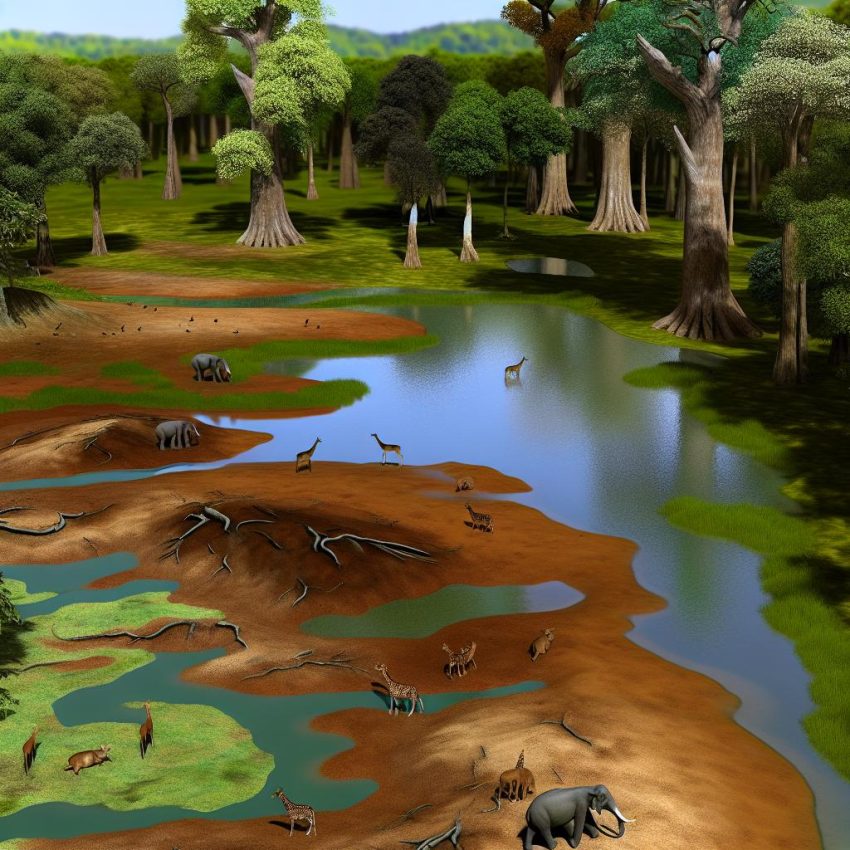Overview of Nagarhole National Park
Nagarhole National Park, often referred to as Rajiv Gandhi National Park, is a renowned wildlife sanctuary located in the southern Indian state of Karnataka. This remarkable park is part of the larger Nilgiri Biosphere Reserve, a UNESCO World Heritage Site known for its extraordinary biodiversity. Covering a substantial area, Nagarhole is considered one of the prime nature destinations in India, attracting wildlife enthusiasts, researchers, and photographers from around the globe. The park’s name, “Nagarhole,” translates to “Snake River” in the local language, a nod to the winding streams that traverse its landscape.
Geography and Climate
Nagarhole National Park occupies an extensive area of approximately 643 square kilometers. Its landscape is predominantly composed of dense forests adorned with a rich tapestry of flora and fauna. The topography includes a variety of physical features such as small streams, rolling hills, deep valleys, and spectacular waterfalls. The park is strategically positioned about 94 kilometers from Mysore, a well-known cultural and historical city, making it accessible for visitors eager to immerse themselves in its natural beauty.
The climate of Nagarhole is conducive to exploring wildlife all year round. During the summer months, from March to May, temperatures range from 22°C to 38°C. While this period can be warm, the dense canopy provides ample shade, ensuring a relatively comfortable exploration experience. The arrival of the monsoon, typically between June and September, brings heavy rainfall, rejuvenating the forest and its inhabitants. These rains have a cooling effect, offering a break from the summer heat. Winter, spanning from November to February, is characterized by cooler and pleasant weather, with temperatures fluctuating between 10°C and 25°C, making it the most ideal time for visits.
Flora and Fauna
Nagarhole National Park is predominantly a deciduous forest, though it boasts a diverse range of vegetation types. The dominant plant species here include teak and rosewood, towering over the thick undergrowth. The understorey is rich with bamboo, sandalwood, and a variety of medicinal plants known for their therapeutic properties. This varied plant life sets the stage for a vibrant ecological community, sustaining a wide range of wildlife.
One can witness an extraordinary array of fauna at Nagarhole. It serves as a critical habitat for numerous species, including those that are endangered and endemic. Majestic Bengal tigers roam the park, alongside the mighty Indian elephants, which are often seen in large herds, grazing peacefully or playing in water bodies. Another significant resident is the gaur, the world’s largest bovine species, which can be encountered in grasslands and open areas.
The park also provides shelter to the elusive Indian leopard, the nocturnal sloth bear, and the strategic pack-hunting dhole, also known as the Indian wild dog. Various deer species, such as the graceful chital and the larger sambar, can be spotted frequently, often serving as prey for the park’s predators.
For bird enthusiasts, Nagarhole is a paradise, boasting more than 250 bird species. Some of the more spectacular avian residents include the vividly colored Malabar trogon, the striking Indian roller, and the distinctive white-cheeked barbet. Birdwatchers may also get the rare chance to sight the endangered greater adjutant stork, whose presence highlights the ecological richness of the park.
Conservation Efforts
The significance of Nagarhole National Park extends beyond being a tourist attraction; it is a critical zone for biodiversity conservation. As part of the Nilgiri Biosphere Reserve, it contributes significantly to preserving the unique ecosystems of the Western Ghats, one of the world’s eight biodiversity hotspots. The park management works in collaboration with various governmental and non-governmental organizations, aiming to maintain and protect this delicate balance of nature.
Efforts are focused on habitat preservation, anti-poaching measures, and scientific research. Education and awareness programs help involve local communities and visitors in conservation initiatives, fostering a collaborative approach to preserving this precious landscape for future generations.
Visitor Information
Nagarhole National Park offers a wide range of activities for visitors. Wildlife safaris are among the most popular, conducted in open vehicles led by expert naturalists. These guided tours provide an unparalleled opportunity to observe animals in their natural settings while learning about their behavior and ecology. In addition to safaris, visitors can engage in birdwatching sessions and embark on nature treks, gaining insights into the park’s rich biodiversity.
For those planning a visit, more information regarding safari bookings, accommodations, and travel tips are available on the official [Karnataka Tourism](https://www.karnatakatourism.org) website. It is recommended to plan visits during the cooler months to enhance the experience, as wildlife visibility is generally higher during this period.
Conclusion
Nagarhole National Park represents a vital piece of India’s rich and diverse natural heritage. It plays an essential role not only in conservation but also in offering a remarkable platform for visitors to engage with the wild. Whether you are a dedicated wildlife enthusiast, an avid researcher, or someone simply seeking tranquility amidst nature, Nagarhole National Park promises a memorable journey. The ecological complexity and beauty it harbors make it a must-visit destination, continually inspiring all who explore its verdant realms.
